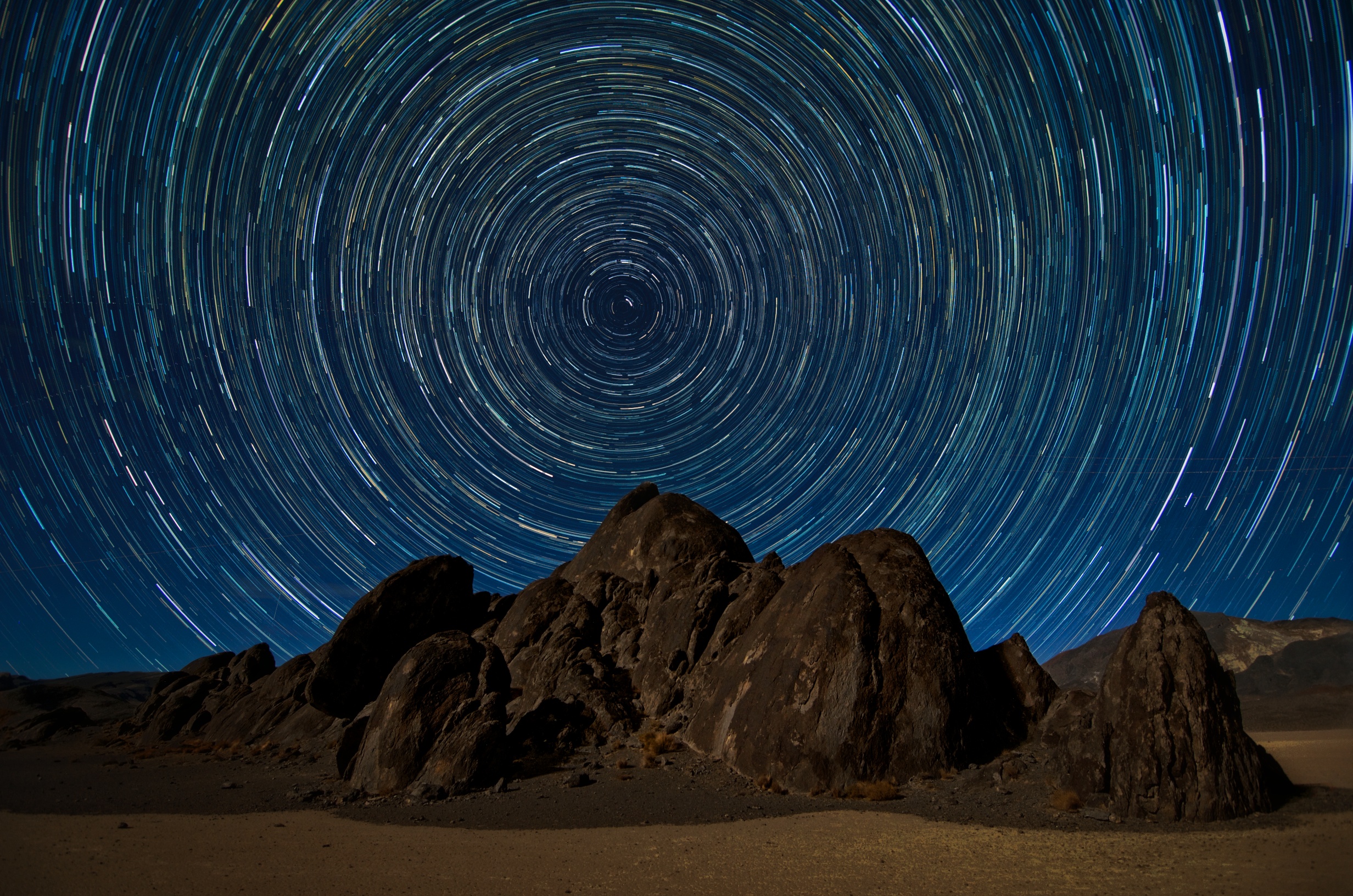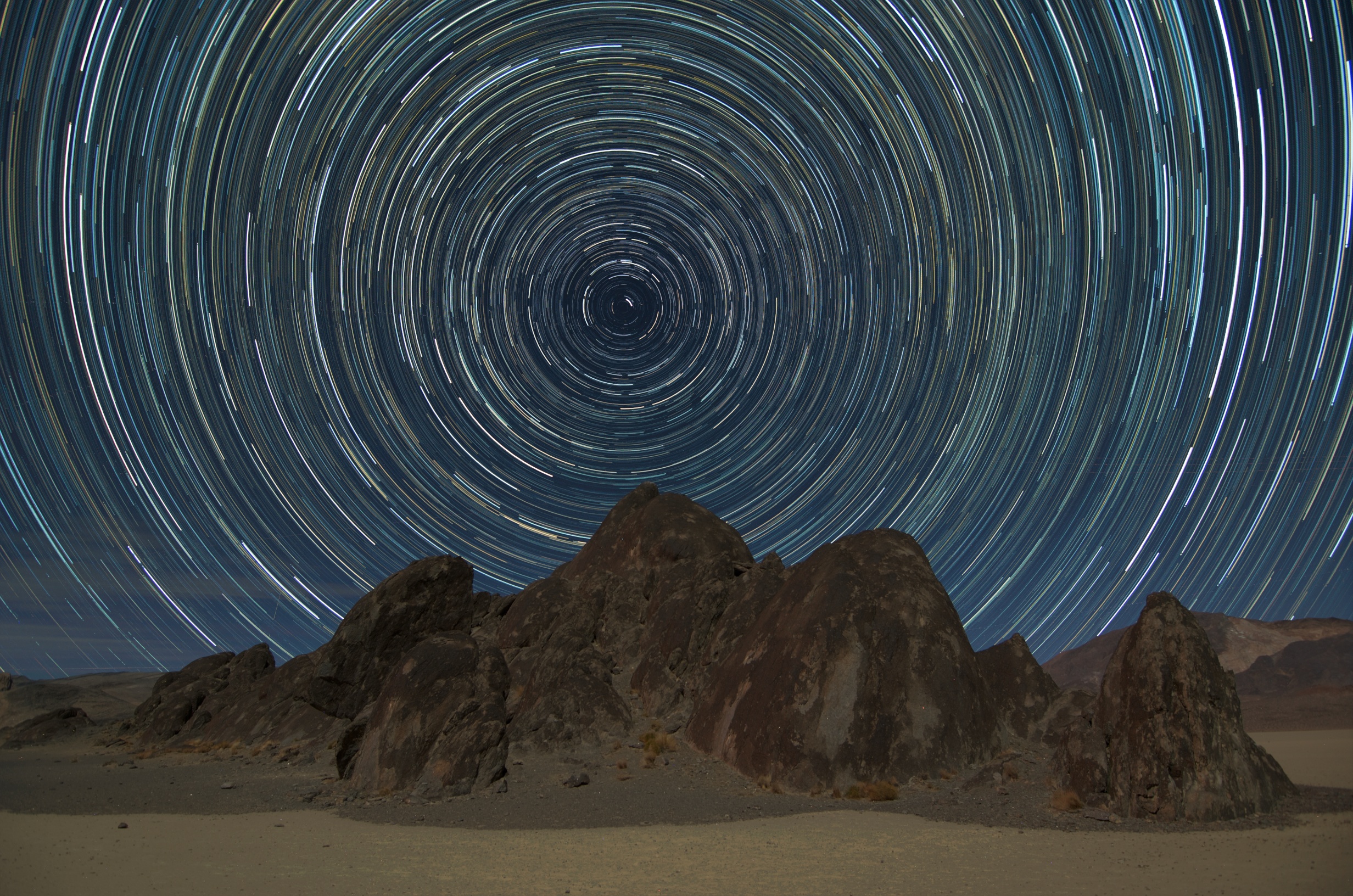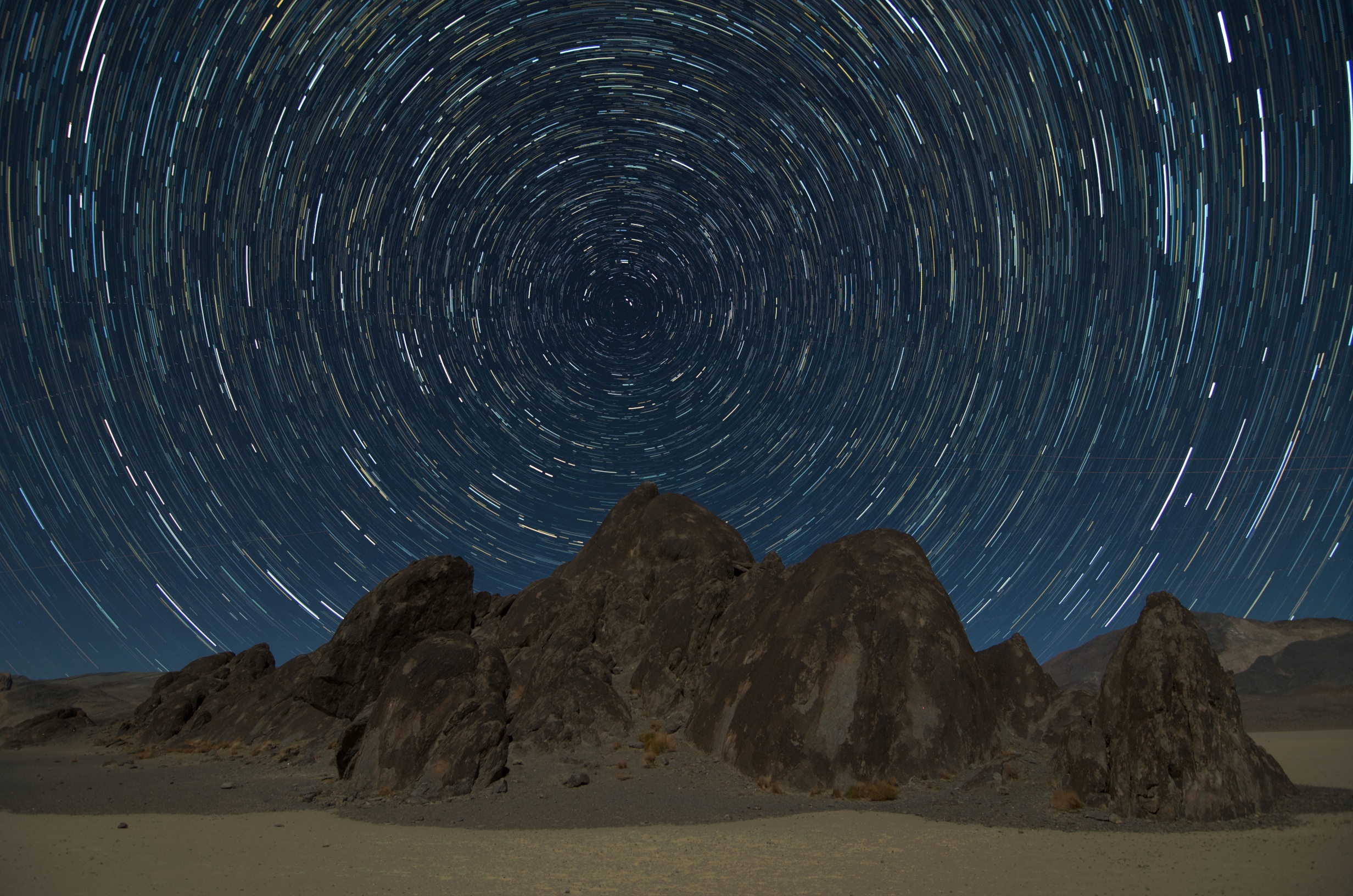Two Techniques for Capturing Star Trails
A couple of weeks ago, I went to Death Valley for a weekend of photographs. Being far away from urban areas, one of my goals was to capture star trails. My approach is to take a long sequence of 30sec exposures, then stitch them together using StarStaX in post processing. And that's exactly what I did for a night out on the Racetrack Playa. While I was there, I met Josef. We got to talking, and he'd also come out to capture star trails. But, his approach to star trails is a single long exposure.
The advantage of a single exposure was clear - no post processing needed and a lot less space taken on a memory card. He asked me if there was an advantage to taking the sequence of shorter exposures. At the time, I didn't really think there was an advantage - it was just a different approach. But, since post processing the shots from the Racetrack, I have realized there is one advantage - increasing your chances for a good result.
"Increasing your chances" comes in a variety of flavors. Here's a few:
|
|
- EROs (Exposure Ruining Objects): Clouds kill a star trails shot, blocking the view of the stars. During a single, long exposure, if clouds enter the frame, the capture may be lost. With multiple exposures, if clouds drift through the frame, you may lose the shot.. Similar to the clouds, planes or satellites may streak across the frame, resulting in distracting streaks of light. Then there's battery failure, camera shake, an overly aggressive light painter nearby - lots of things can ruin a long exposure.
With a sequence of exposures, software can be told to ignore certain frames, and fill in the gaps keeping the star trails cohesive. Simply put, the multiple exposures are crutches, giving you more potentially successful exposures.
- Reduce camera noise: All cameras have noise. StarStaX has an option to process a dark frame - an exposure taken with no light entering the camera (put the lens cap on, cover the lens with a hat, etc.). The noise spots still appear on the sensor, and the software can drop those out in post processing.
- No "upper limit": A single, long exposure has an upper limit on time based on the scene and the maximum aperture of your lens. For example, suppose a 2min exposure at f/4 gives a proper exposure for your foreground subject. A 64min exposure at f/22 will provide the same foreground exposure.
The 64min time lapse gives you the star trails. If your lens aperture maxes out at f/22 and you want to capture longer trails ... you take more shots and post process. This is why I quote "upper limit" - there isn't a hard ceiling so long as you're willing to take multiple photos. But, each long exposure is subject to the hazards above.
Like with most things in life, in the end there is no right or wrong answer. For me, while the lure of fewer images to import and process is a draw, I expect I'll stick with multiple short exposures. Lock the cable release, walk away for a while, let the universe spin. And don't worry about EROs?
So ... how do you capture star trails? Fewer, longer exposures? Or many, shorter exposures? Or do you have another technique?


